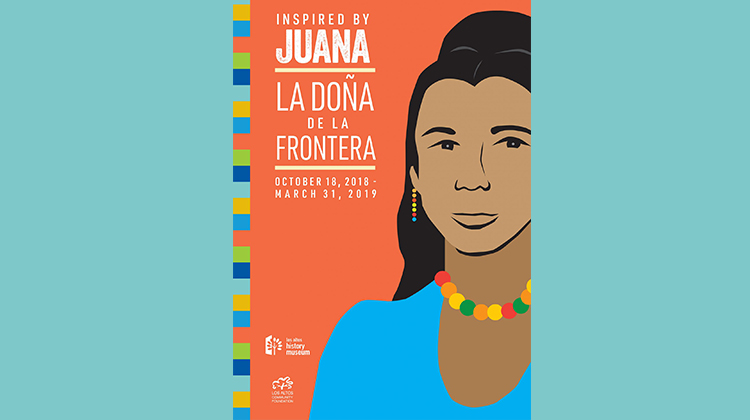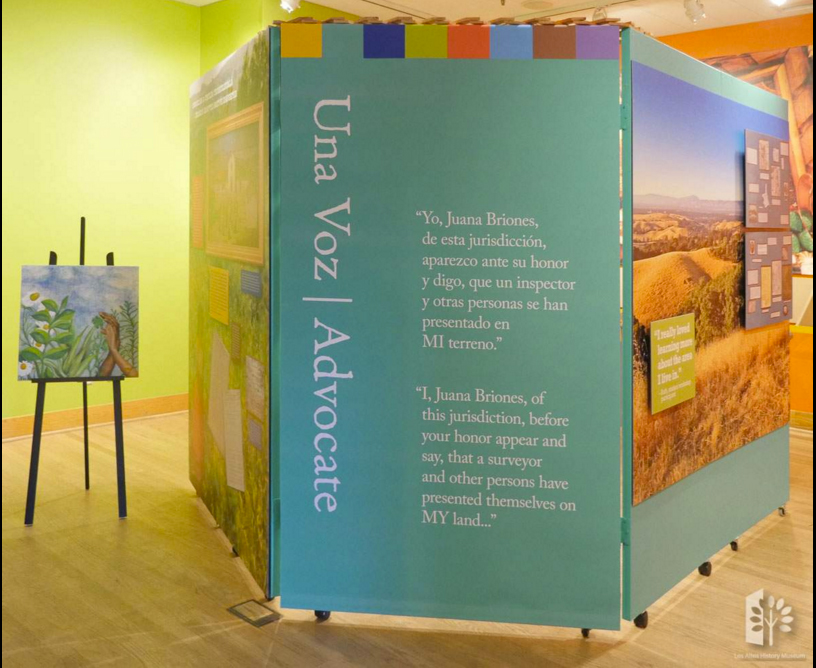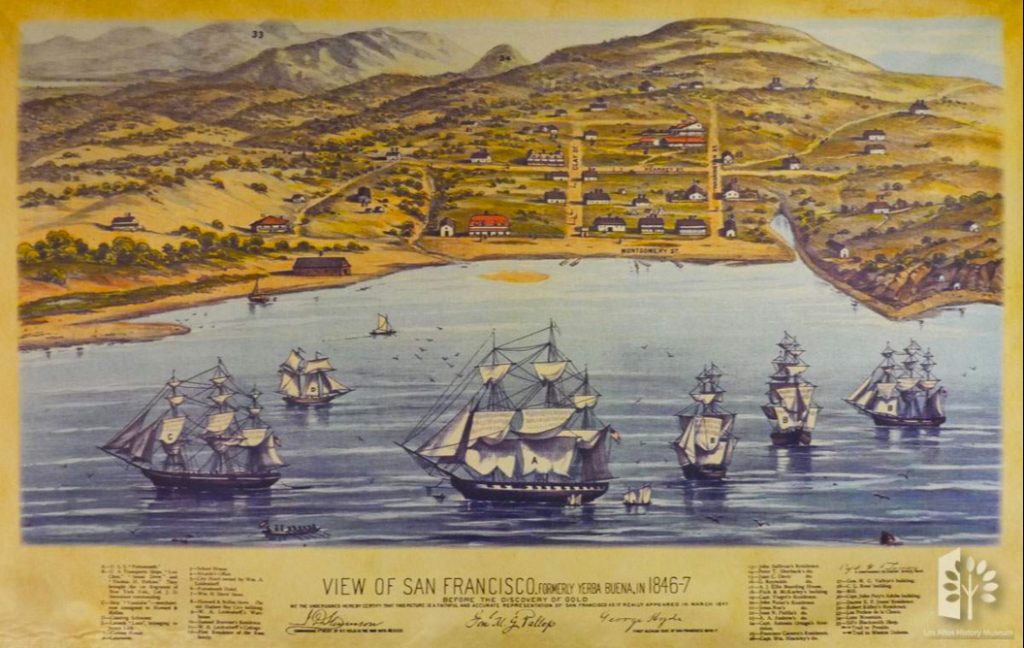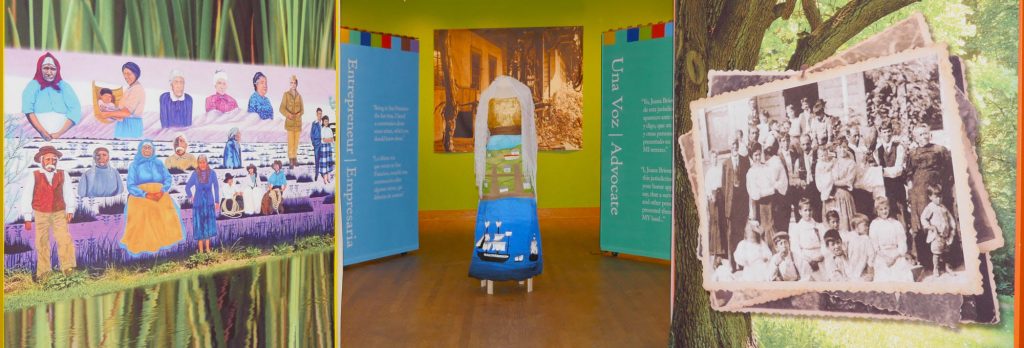
By: Perlita Dicochea, Ph.D.
The story of an ordinary Afro-mestiza who led an extraordinary life during tumultuous times is the driving force behind Jeanne Farr McDonnell’s book Juana Briones of 19th Century California. Weaving together both a rich history and biography with a wealth of available evidence—including court testimonies, government documents, personal letters, and well-preserved artifacts—McDonnell reveals a multifaceted Juana (1802-1889) in her roles as entrepreneur, pioneer, curandera, landowner, mother, and remarkably courageous voice.
Born in Branciforte (present-day Santa Cruz) to parents whom were among the first colonizers under Spain from the northern regions of present-day Mexico, Juana overcame personal suffering while healing others throughout the Spanish, Mexican, and Anglo-American political eras and independently accumulating the capital to own over 4000 acres of land in present-day Los Altos and Los Altos Hills.
La Curandera/The Healer
In 1919, four decades after Juana’s death, Harry Peterson, curator of the Stanford University in the early 1900s, wrote that Juana ‘‘…‘became the best known and the best beloved woman in California, [was a] ministering angel, among rich or poor, the doors swung open in cordial welcome. Her very name was a talisman. In the Indian villages she was received with awe and reverence, and at the missions every padre was her devoted friend’.”
Indeed, McDonnell’s account underscores Juana’s striking ability and willingness to heal many strangers from various socio-economic and cultural backgrounds while experiencing a long, painful struggle to break free of an abusive alcoholic husband and support her eleven children. To be sure, Juana appealed to the courts regarding her abusive, controlling husband twelve times between 1840 and 1846.

Una Voz/An Advocate
In official testimonies against her husband, Apolinario Miranda, Juana repeatedly mentions he did not financially support the children and ultimately was stopping her from leaving the home to earn income. McDonnell elaborates, “Men had the right to punish wives and children, but that depended in part on fulfilling their obligation to provide for their families” (p. 102).
I must add, upon reviewing translations of the court testimonies it becomes clear, were it not for her spouse’s alcoholism Juana would most likely not have received support from the court system to physically leave her husband while he was intoxicated to reach safety in a separate shelter.
So many questions remain unanswered – How did Juana care for her children during the contentious episodes with her husband? How did she manage to keep her head up in the small town of Yerba Buena? What if Apolinario was not an alcoholic, would Juana have had the social support necessary to become the woman we know and admire today?

La Terrateniente/The Landowner
Imagine building a small business selling dairy products and produce to sailors in Yerba Buena (present-day North Beach in San Francisco) and expanding to partake in the lucrative hide and tallow trade while resisting a violent husband, helping others fight illnesses, raising eleven children, volunteering one’s time at local missions, and fighting for titles to one’s land in a patriarchal court system?
McDonnell assures us, “By the time Juana took the uncommon steps to effect a definitive, legally recognized separation, she had already experienced her disadvantage as a married woman attempting to acquire title to the land she occupied in Yerba Buena” (p. 102).
Nevertheless, she persisted.
Here I am reminded of one assessment of Juana’s way of being a woman as a “multiplicative praxis,” offered by Theodorea Berry, chair of the African American Studies Department at San José State University, at one of Los Altos History Museum’s programs related to the Museum’s current exhibit Inspired by Juana: La Doña de la Frontera (October 2018 to April 2019).
Berry explained multiplicative praxis as the art of persisting, multitasking, and, most importantly, serving others, which we can observe at the heart of Juana’s way of being in early California. And it was a way of being similar to many Catholic mestiza pioneers like Juana.

Racial, Sexual and Other Matters of Power
Juana Briones’ business savvy, initiative, and assertiveness notwithstanding, her racial position protected her from the horrors of displacement and rape that colonization inevitably brings upon indigenous communities.
As an example, McDonnell does not shy away from the fact that Juana interacted with the Ohlone, the first peoples of the San Francisco Bay Area, throughout her life and in various capacities including as servants, skilled workers, neighbors, and friends.
Juana’s parents shifted up in the Spanish Caste System when they made the trek north to Alta California, transitioning from afro-mestizos, the bottom of the race hierarchy in colonial Mexico, to gente de razón, or people of reason (meaning those whom uphold Spanish Catholic values and lifestyles), a significant step above the indigenous, both the converted and unconverted.
Certainly, the racial shift benefited her father, McDonnell explains, whose life-long career as a soldier at various missions as part of the prestigious Catalan Volunteers may not have offered much by way of property, but did provide for the family and built a solid family reputation and network across Alta California.
If we agree with McDonnell that Juana Briones is to be celebrated and remembered, we must also embrace the author’s careful research and assessments about the ugliness of nation-state making and empire building. In other words, McDonnell makes it plain that we cannot connect with Juana without acknowledging the lessons of race and gender as political, economic, cultural, contradictory—and often destructive—constructs serving the processes of conquest and colonization surrounding Juana’s family, personal life, and documented voice.
Dr. Perlita Dicochea is Co-Curator of the current exhibit Inspired by Juana: La Dona de la Frontera, which runs through March 31st, 2019, at Los Altos History Museum. She earned her Ph.D. in Ethnic Studies at U.C. Berkeley, M.A. in Communication Studies at Arizona State University, and B.A. in Communication Studies at Santa Clara University. Perlita has been a professor of Ethnic Studies and Communication Studies since 1997 and has published original research on Chicana feminism and environmental justice issues. Most recently, her first bilingual children’s story, Mi Zapato/My Shoe, was published in January 2019 by Los Altos History Museum. Dr. Dicochea is also a Certified Lactation Educator Counselor and incredibly grateful (and tired) mother of two toddlers.
Want to learn about Juana Briones:
- Join the Modern Latina Book Club this month as we start to read Jeanne Farr McDonnell’s book Juana Briones of 19th Century California that weaves together both a rich history and biography with a wealth of available evidence.
- Join us on Thursday, February 7, 2019 for a viewing of the Juana Briones Exhibit at the Los Altos History Museum followed by a panel discussion with Latina leaders at the Latina Business Leaders: Diverse Pathways to Success – Continuing the Legacy from Juana to the Next Gen event. Event registration: https://bit.ly/2FsOwS4
- Visit the Juana Briones exhibit at the Los Altos History Museum from October 18, 2018 through March 31, 2019

Note: All images courtesy of Los Altos History Museum.
